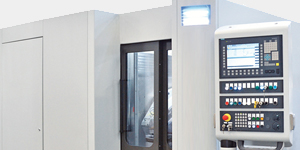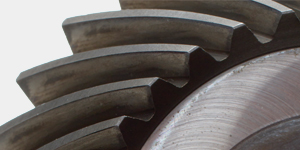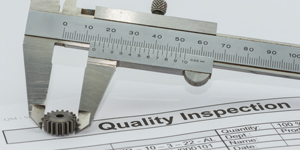Polymer quenchants are commonly used for induction hardening, aluminum heat treating, and open tank heat treatment of steel. Contamination is always a problem. Dirt from the environment and parts such as machining swarf are always present. Parts usually come from prior processes, and may be covered with different types of coolants, such as oils, synthetic coolants, emulsions, and semi-synthetic coolants. If the parts are cleaned prior to being heat treated (recommended, but rarely done), the parts may contain residual soaps.

The most common contaminants in induction-hardening applications are organic contaminants from hydraulic fluid leaks, coolants, or forming lubricants. Rust preventatives and cleaners are also found on parts. Solids, such as soot or high water hardness, can also be present. High inorganic salt content from either rust inhibitors or very hard water can also be present in the quench tank. An extreme example of a badly contaminated polymer quenchant used for processing parts is shown in Figure 1.
The contamination observed varies by customer. Some customers show very clean quenchants, with little contamination. Other customers show highly contaminated samples, with oil or other contaminants present.
Probably the largest source of contamination is from the lack of proper cleaning prior to induction hardening. The quench tank captures the coolants from machining operations and possibly hydraulic fluids from the induction hardening equipment used for transfer of parts. Properly designed skimmers and filtration systems will help minimize this source of contamination from the quench tank (Figure 2).
Contamination by cutting fluids, rust preventatives, cleaners, or hydraulic fluids can provide nutrients for biological growth. These contaminants may also prolong or stabilize the vapor phase of the quenching process, which can contribute to low hardness and inadequate case depth. Often the use of an air knife prior to the heat-treating operation can remove most of the coolant and reduce the contamination. While cleaning the parts prior to heat treatment is always preferred, the use of an air knife is an acceptable alternative.
Sediment and particulate matter such as scale have little effect on the quench rate but can increase the overall quench rate by providing nucleation sites for bubble formation and destabilize the vapor phase. This is not usually a problem in induction hardening because of the direct impingement of quenchant on the parts. However, this particulate matter can hinder concentration control by making the refractive index difficult to measure. This contamination can also affect the cleanliness of the quenched component. Filtration is always recommended to remove this particulate. Typically, filtration of the quenchant to approximately 25 microns is adequate to remove most particulates.

Test
To test the effect of different types of contamination on commonly used polymer quenchants [1], a simple Design of Experiments (DOE) test matrix was created. This DOE was a full factor ANOVA examining the factors of bacteria and mold (biologicals); water hardness (as CaCO3); salt concentration (sodium nitrite); solids contamination (graphite), and organic contamination (mineral oil). The test matrix is shown in Table 1. The quenchant was a PAG-type polymer quenchant (Aqua-Quench™ 251), commonly used for induction hardening. Concentration was 5 percent by weight.
Two-liter solutions were prepared. Cooling curves were performed on each of the samples, using ASTM D 6200 [2] and ASTM D6459 Tensi Method (1,000 RPM). The temperature was 40°C. The results of the cooling curve testing are shown in Figure 3.
Using the ivf SmartQuench [3], the cooling curves were examined for key characteristics. These characteristics are: maximum cooling rate; temperature at maximum cooling rate; cooling rate at 300°C; and times to 600°C and 400°C.

At 5 percent concentration of Aqua-Quench 251, the organic contamination was the predominant factor affecting the average for the maximum cooling rate, temperature at maximum cooling rate, cooling rate at 300°C; and times to 600°C and 400°C.
While the organic contamination was the primary factor affecting the maximum cooling rate, temperature at maximum cooling rate, cooling rate at 300°C; and times to 600°C and 400°C, it was only statistically significant in the cooling rate at 300°C, and the time to cool to 400°C. Additionally, the presence of bacteria was statistically significant in the time to cool to 300°C.
The temperature range of 300°C is significant because it is within the range of martensite start temperatures that are typically found in induction hardened parts. This can affect the expected properties and resultant distortion.
A typical main effects graph is shown in Figure 4.


Conclusions
At lower concentrations of polymer quenchant, more typical of those used in induction hardening, the presence of organic contamination (mineral oil) was found to be significant in increasing the time to 600°C and 400°C, and decreasing the cooling rate at 300°C. The presence of bacteria was also found to be statistically significant in increasing the cooling rate at 300°C.
It was found that only the organic contamination such as mineral oil and bacteria were statistically significant in reducing the overall quench rate of the polymer quenchant. Small amounts of contaminants increased the effective polymer concentration by several percent. This decrease in effective quench rate can have a significant impact on as-quenched core and surface hardness, and lead to rejected parts.
Cleaning parts prior to induction hardening is an effective method of reducing polymer contamination, as well as extending polymer quenchant life.
Should there be any questions regarding this article, or suggestions for future articles, please contact the author or editor.

References
- D. S. MacKenzie, “The Effect of Contamination on Cooling Curve Behavior of Polymer Quenchants,” in ASM Heat Treating 2017, Proceedings from the 29th Heat Treating Society Conference and Exposition, 24-26 October, Columbus, OH, 2017.
- ASTM International, Standard Test Method for Determination of Cooling Characteristics of Quench Oils by Cooling Curve Analysis, ASTM D 6200, Conshocken: ASTM, 2012.
- Swerea IVF AB, SQIntegra Product Brochure, Monldal, 2012.






















